When it comes to expressing the quality of an audio system component, the amount of distortion it adds to a signal is the defining factor. In this article, we’ll talk about how much distortion each part of an audio system adds – so that you can target your budget for the greatest benefit. We’ll rank four categories of audio equipment based on the amount of distortion they add to your music. Ultimately, our suggestion is to optimize your upgrade budget by focusing on the products that will deliver the most significant improvement in perceived audio quality.
What Is Audio System Distortion?
Distortion is the addition of unwanted information to an audio signal. In minimal amounts, distortion can be difficult to perceive. However, above a level of about 0.5%, distortion is audible and can change the music’s tonal balance and perceived dynamics.
It’s become clear that most people think distortion is only present in an audio system when a speaker is overdriven or an amplifier starts to clip. While that level of distortion is very audible, unwanted harmonic and intermodulation distortion is added even at moderate listening levels. For example, a low-quality amplifier providing less than a watt of power to a speaker can add almost 1% distortion to the signal. A poorly designed speaker or one operating outside of its intended frequency range can easily add 3-5% distortion, and a subwoofer driven at moderate levels can be well over 10%.
No. 1 – Speakers and Subwoofers
If the paragraph above wasn’t enough of a hint, let’s make it clear: Speakers and subwoofers are notoriously non-linear. Let’s say you’re feeding a 100 Hz sine wave into an inexpensive woofer. If the design has less compliance (more stiffness) in the forward direction relative to the rearward, the driver’s output will be reduced for half of the waveform. That’s distortion. If the driver has changes in inductance relative to forward or rearward motion, there will be a reduction in output over one half of the produced audio waveform. Distortion is also possible from resonances in the cone, surround and dust cap that add significant unwanted energy.
You need to know that ALL speakers add more distortion as they are driven to higher excursion levels. Aside from not using a properly designed or constructed enclosure for your subwoofers, or trying to play the woofers in your doors at frequencies below 80 Hz, louder means less quality.
When shopping for car audio upgrades, look for speakers that include distortion-reducing technologies. We’ve talked about copper and aluminum shorting rings, copper caps and flat progressive spiders. To minimize power compression (a reduction in output as the speaker is driven at higher levels), you’ll need to choose a solution that balances cooling features like a large-diameter voice coil with acceptable high-frequency performance.
Last but certainly not least, the product specialist you’re working with needs to design, install and calibrate your audio system properly. Proper speaker mounting adapters and spacers made from weather-resistant materials are a starting point for installation. Choosing driver sizes that offer good directivity performance, so your music sounds great from both sides of the vehicle, is another important criterion. Finally, setting crossovers, equalization and signal delays to create a realistic listening experience is crucial. Getting any of these steps wrong will reduce your enjoyment of your favorite music.
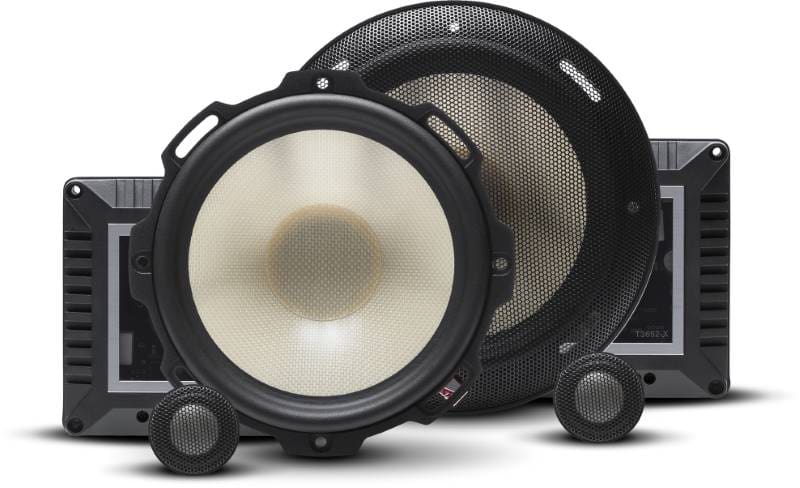
The Rockford Fosgate Power Series T3652-S component set features woofers with an integrated shorting ring and a large 38 mm voice coil former for excellent power handling.
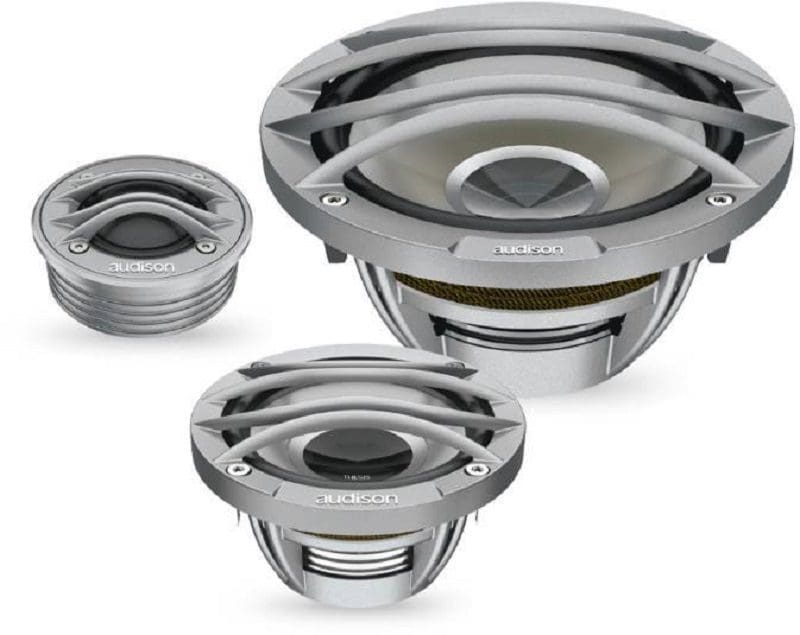
The three-way Audison Thesis TH K3 II A Orchestra features an aluminum shorting ring on the mid and a massive 50 mm voice coil on the woofer for great sound at high volumes.
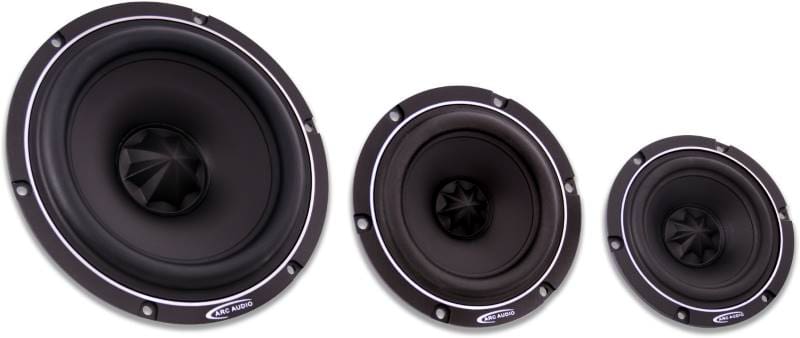
The RS Series speakers from ARC Audio include copper shorting rings in the motor assembly, papyrus-damped pressed paper cones and a unique dust cap that prevents resonance.
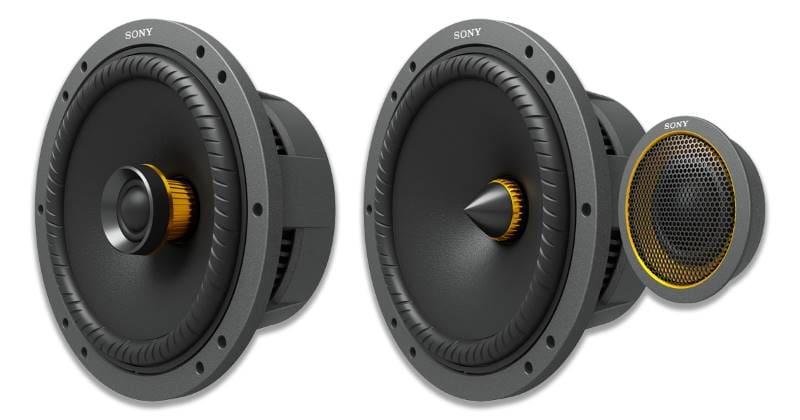
The woofers in the Sony Mobile ES drivers use a shorting ring to improve upper midrange clarity. Extensive cooling technologies ensure great sound with the volume cranked.
No. 2 – Amplifiers
If you’ve read our articles on distortion, then you know that we have a passion for testing amplifiers. At their worst, amplifiers add maybe 1/10th of the distortion to an audio signal that a low-quality speaker does. This doesn’t mean that they aren’t in a solid second place in terms of where you should invest in an audio upgrade.
Amplifiers are supposed to amplify a signal – nothing more, nothing less. They should output what you feed to them without adding warmth, brightness or changes to overall tonal balance.
Low-quality or poorly designed amplifiers can add distortion because of the crossover between the positive and negative output devices. In addition, they can exhibit frequency response issues from poorly designed bass boost and filter circuits. Amplifiers with high output impedance can be affected by changes in load impedance.
A second consideration for amplifiers is noise. If you turn your car stereo system on and hear a lot of hiss, it’s likely from the amplifier. Every amplifier adds a little background noise. Whether noise affects your enjoyment depends on just how much is added. The signal-to-noise ratio lets you know what’s going on behind the scenes.
A few quick tips for buying high-quality amplifiers: As far as Class-D amplifiers have come, they are best suited to powering woofers and subwoofers. The output filter networks can get a little fussy at higher frequencies. As such, Class-AB amplifiers are better for midrange and high-frequency duties. Second, the physical size of an amplifier significantly affects how much noise is added to the output. Small amplifiers are typically noisier. Third, watch how specifications on distortion are provided. The ANSI/CTA-2006-C standard requires that distortion and noise numbers be published when measured at an output level of 1 watt into a 4-ohm load. Measurements at other levels may be misleading.
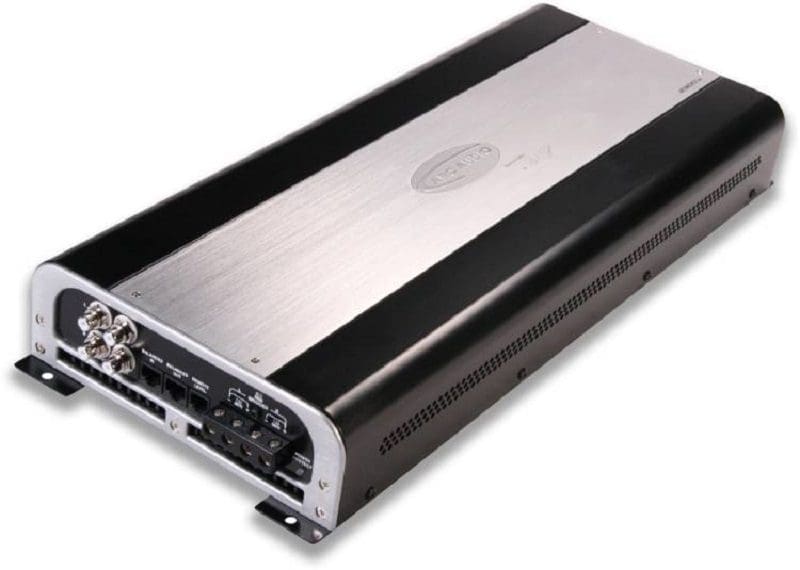
Even though they were designed decades ago, the Signature Edition amplifiers from ARC audio remain a staple when it comes to clarity.
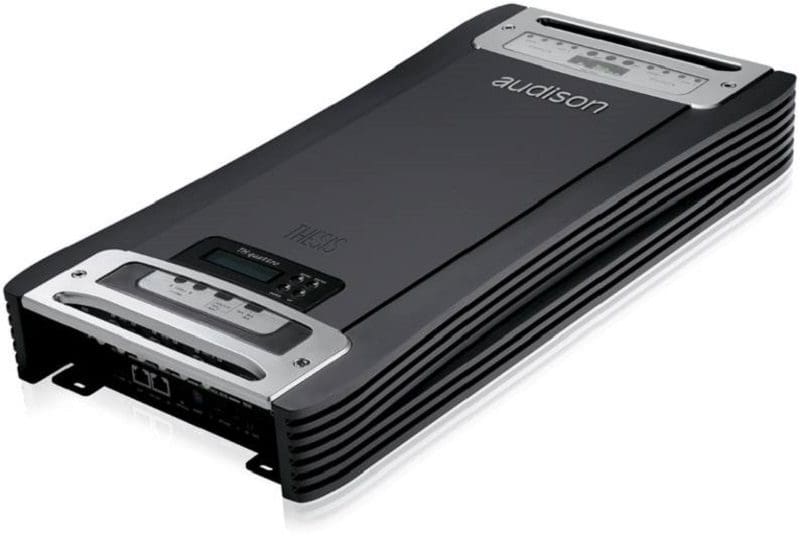
As the four-channel in the Thesis amplifier family, the TH quattro delivers impressive performance and can be fed digital signals directly from a DSP.
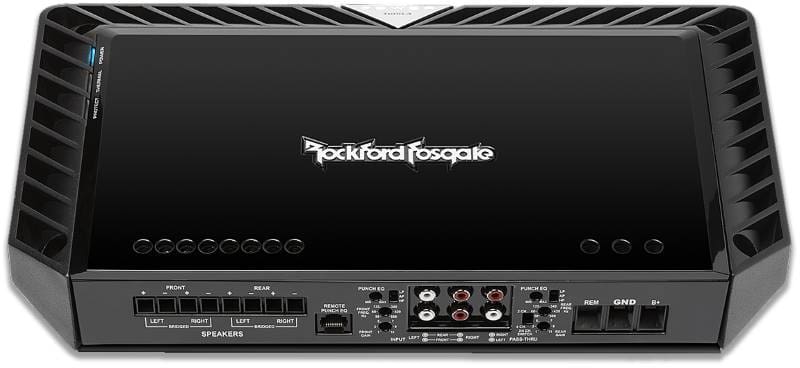
Rockford Fosgate’s T600-4 delivers 100 watts of power per channel and checks all the right boxes for excellent distortion and noise performance.
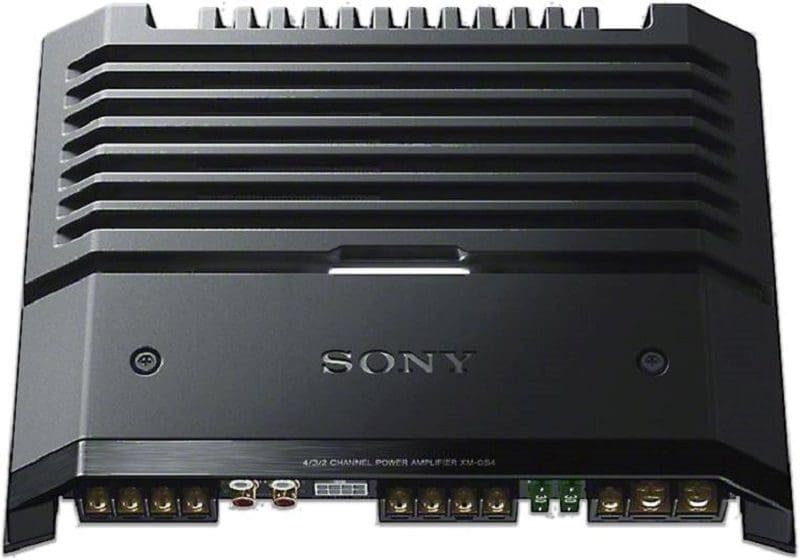
With impressive noise performance and frequency response that extends to 100 kHz, the Sony XM-GS4 is a quality solution that punches well above its price point.
No. 3 – Source Units
We’ve tested several source units lately, and though their effect on sound quality isn’t as dramatic as the speakers and amplifiers you choose, there are measurable differences from one model to another. While amplifiers have to deal with high voltages and significant current delivery, the signals inside a radio or multimedia receiver are pretty small. These low levels mean that noise from a power supply can affect what you hear.
Back in car audio’s heyday, we had CD units like the Sony Mobile ES CDX-C90, Clarion ProAudio DRZ-9255 and Alpine’s F#1 Status DVI-9990E. Of course, the days of high-end CD players are gone, but there are still a few options for a high-quality source unit.
Picking a good head unit is tough. You’ll likely choose between something mainstream with good performance or an upgrade to something designed to offer better sound quality. For example, we used to suggest 24-bit Burr-Brown D/A converters. Now, those are in almost every multimedia receiver. Our advice is to choose a product that has the features you want and is clearly designed to deliver improved audio quality.

The current godfather of great sound, the Sony RSX-GS9 is a digital media receiver that supports DSD and other media files with preamp output capabilities to 90 kHz.
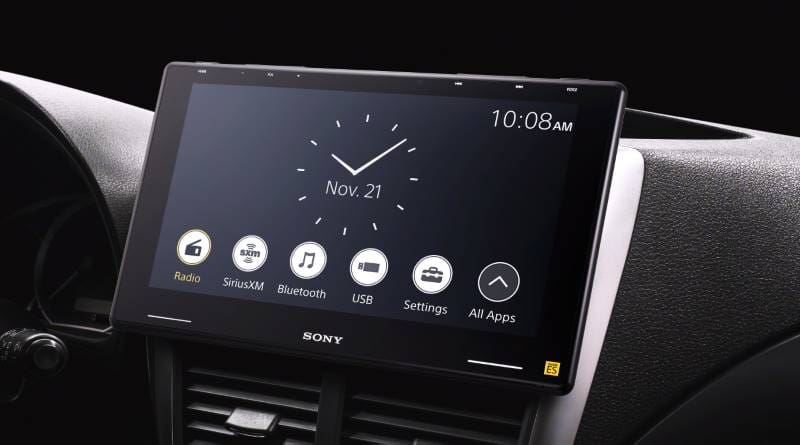
The XAV-9500ES is a floating-display multimedia receiver that’s part of the Mobile ES Family. Full DSP, support for High-Resolution audio and smartphone integration make this a modern home run!
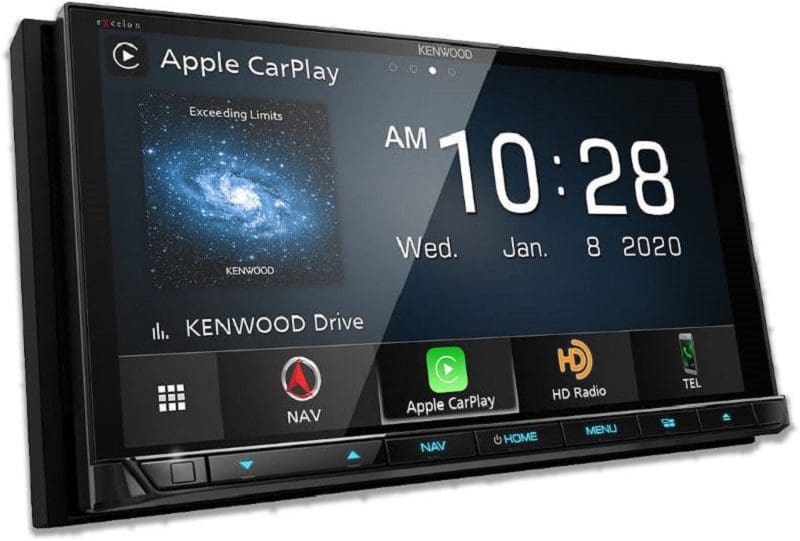
The eXcelon Reference DNX997XR from Kenwood combines premium connectivity with support for high-resolution media file playback.
No. 4 – Digital Signal Processors
Putting the DSP family at No. 4 in our list might puzzle anyone who understands how DSPs work and why they are an absolute necessity in a premium car audio system. Let’s make it clear that you need a DSP to equalize and filter the signals going to your speakers for them to deliver realistic performance. As such, a DSP is one of the most important components in an audio system. Its ranking in this article is based on whether or not you need to allocate extra funds to purchase a product in each category to yield better performance. So, having a DSP is a requirement; buying the fanciest one on the market won’t make a huge difference to what you hear.
Having said that, there are subtle differences, especially between entry-level and premium solutions. For example, most digital signal processors use similar DSP chips to perform the audio adjustments. As these are handled in the digital domain, the differences in transparency are more about the analog circuitry and the conversion process.
One tip: Don’t let yourself be fooled by claims about support for high-resolution in a DSP. In most cases, the analog-to-digital and digital-to-analog converters are noisier when running at higher frequencies. Stick with solid performance and ensure that you have an expert configure the system, and you’ll be delighted.
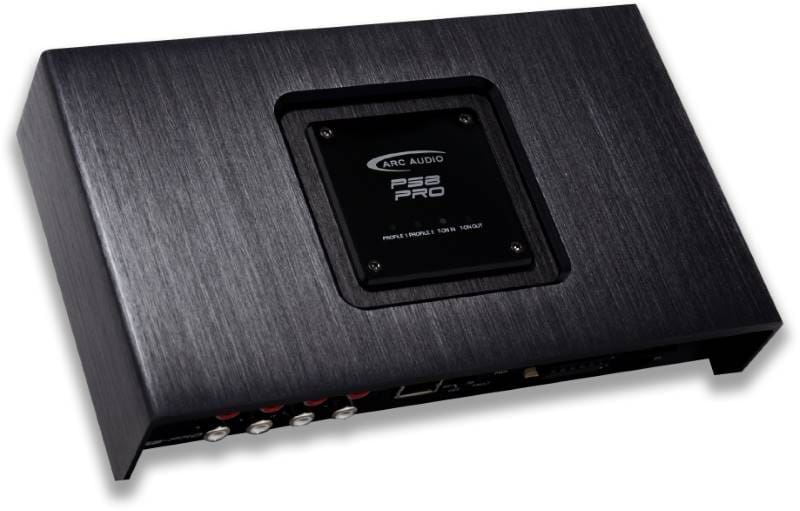
The PS8Pro digital signal processors from ARC Audio offer impressive sonic clarity and feature full support for the Maestro AR amplifier integration modules.
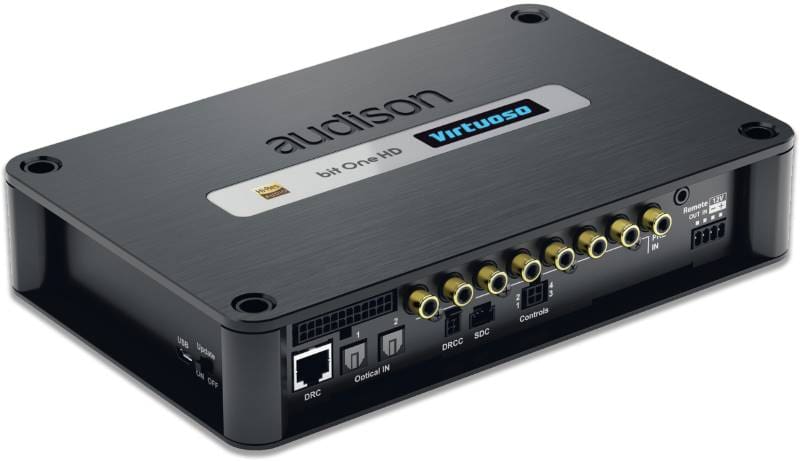
If you need to undo signal processing in your factory audio system, the bit One HD Virtuoso is the tool of choice. It can tame delays, equalization and all-pass filters to create a perfect starting point for an amazing audio system.
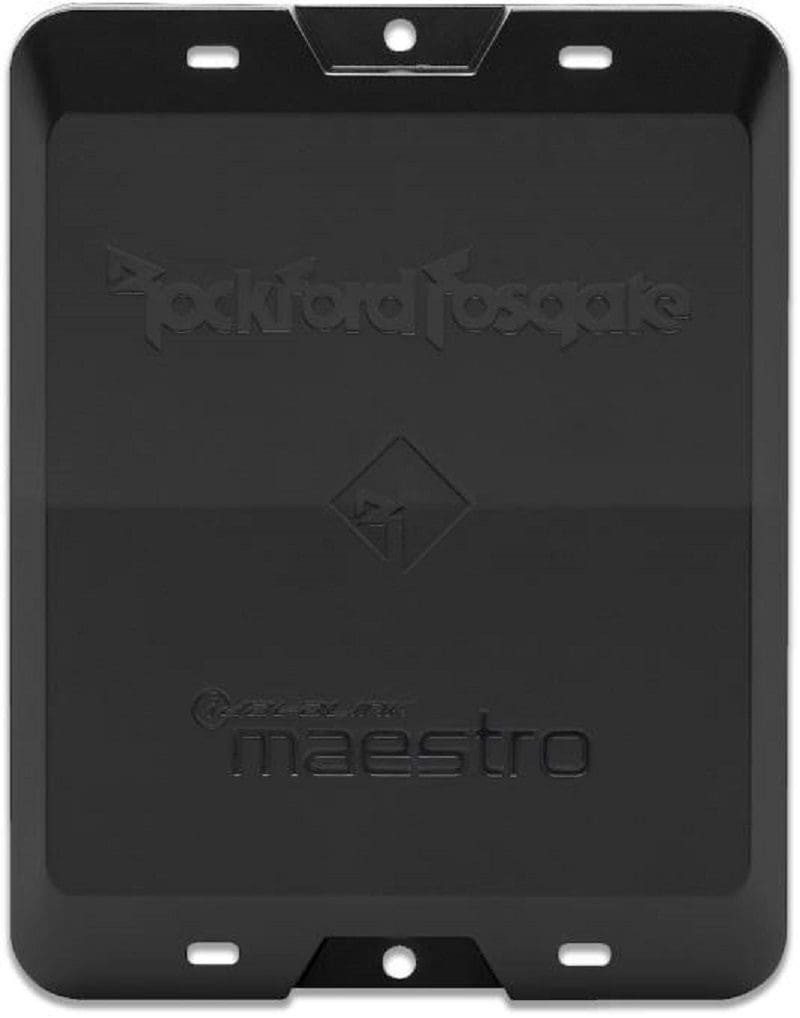
The DSR1 from Rockford Fosgate features eight output channels with complete filter, equalization and delay functions. Integrated Maestro AR technology helps to ensure that your audio system will work smoothly.
Choose Your Car Audio Upgrades Wisely
Here’s one last thought on buying high-quality car audio equipment: Every brand on the market is competing for your dollar. Some of them offer excellent products that result from hours, if not years, of designing and testing to deliver the best possible performance. On the other hand, some products are just expensive while delivering mediocre performance. So make sure you take the time to audition several options from different specialty mobile enhancement retailers near you.
This article is written and produced by the team at www.BestCarAudio.com. Reproduction or use of any kind is prohibited without the express written permission of 1sixty8 media.
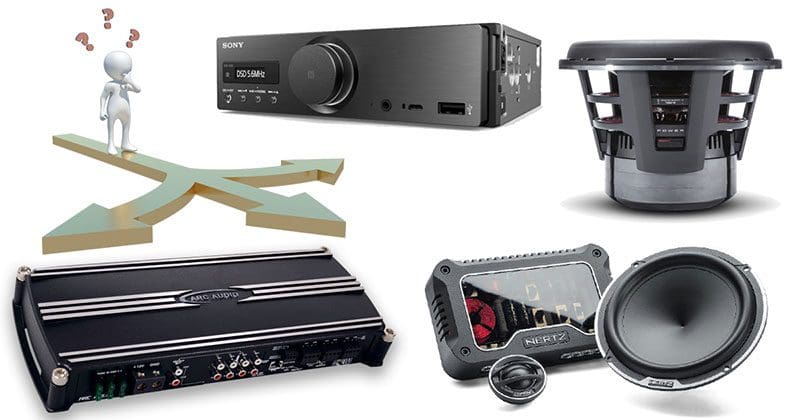
Leave a Reply